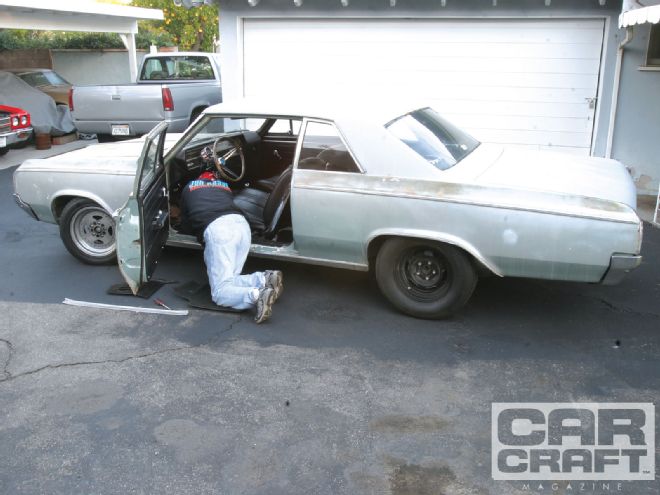
If you watch television, CSI: Las Vegas and its string of spin-offs are all about collecting evidence and determining how the crime went down. In the hunt for an old car to turn into the next ultimate street machine, the process is much the same. Evaluating a car requires careful attention to details-and the car will reveal its story (and its bad bodywork). We talked with Frank Saenz who does muscle car restoration in Ventura, California, to get some tips on ways to evaluate a car and look for bad bodywork. According to Saenz, "It's like you're doing a CSI on the car, trying to re-create the crime that happened to it." So slap on your latex gloves and Car Scene Investigator hat and we'll take a run at some old car investigator tricks.
Bad Bodywork This story will outline typical problem areas that crop up with most '60s-and-later production cars. Even so-called rust-free West Coast- and Southwest-area cars can exhibit nasty corrosion that can be hard to spot unless you look closely. The other big land mine is poorly repaired collision damage that is often concealed with buckets of plastic body filler. These efforts are not as easy to spot with a casual glance and may require the use of a simple tool like a pocket magnet to help identify areas where the Bondo hides.
This leads us to the final chapter of the story where, after finding the car and performing a thorough inspection, you must make a decision as to whether the damage you've uncovered still makes the car a decent purchase. You must also realize that there is almost certainly much more evil lurking underneath that paint and bad bodywork that you didn't find. This is where advice from dispassionate friends can be extremely helpful, since they will look at the car with a much more objective eye and give you feedback on whether it's a good deal. It's important to listen carefully when your buddy tells you, "It's a rust bucket-walk away." Of course, that's assuming you trust him not to come back and buy the car when your back is turned. Buying old cars is equal parts science, art, and finance that requires you to be enthusiastic about what you're about to buy but not get lost in the romance without knowing at least most of the car's secrets.
When It's Time to Cut and Run
The older our coveted Camaros, 'Cudas, and Mustangs become, the less likely it will be to find a near-rust-free project car. We can tell you from personal experience that saving an extremely rusty survivor can be a very expensive proposition. I bought my '66 SS396 Chevelle in Iowa in 1971, and the Chevelle plowed through 13 years worth of nasty Iowa winters before I moved to California in 1979. Another 20 years transpired before I began its restoration, which I thought would only require a new floorpan. I took the car to Sal Perez at American Muscle Cars in San Bernardino, California, to perform the surgery since the company takes the time to install panels replicating the original factory spot welds. By the time Perez's guys were finished, only the original roof, firewall, doors, decklid, front fenders, and some of the inboard reinforcement panels remained. The rest of the car resembled a pin cushion with rampant rust throughout the body. Even the hood suffered from rust perforation. There is still much more to do on the car, and the bill just for the labor topped $15,000. When compared with the price of a brand-new Dynacorn body at roughly $15,000 (they unfortunately don't make a '66 Chevelle body-yet), you can quickly see how it can be an advantage to purchase a new body rather than attempt to restore a rusty original.
To give you an idea of the cost of restoration, we also did a quick accounting of the major sheetmetal parts for a '66 Chevelle of front fenders, door shells, a floorpan kit, quarter- and rocker panels, a trunk floor, and inner and outer wheelhouses. The OPG retail price for just these parts tops $3,300. Add perhaps another $1,000 for miscellaneous support panels and body mounts and the total bill to restore the sheetmetal could easily reach $20,000. If the work is on a Mopar or a Ford, expect to pay more for similar panels due to their smaller sales volume. I went ahead because I wanted to say this was still my original high school car, and it cost me a bunch of money to make that claim.
The rule of thumb for determining how much an entire project will cost is to triple your best estimate. Of course, that's if you really want to know. Most of us don't.